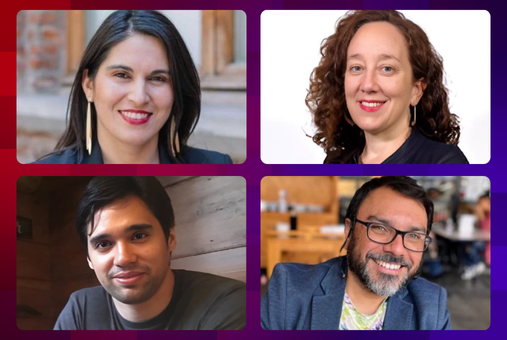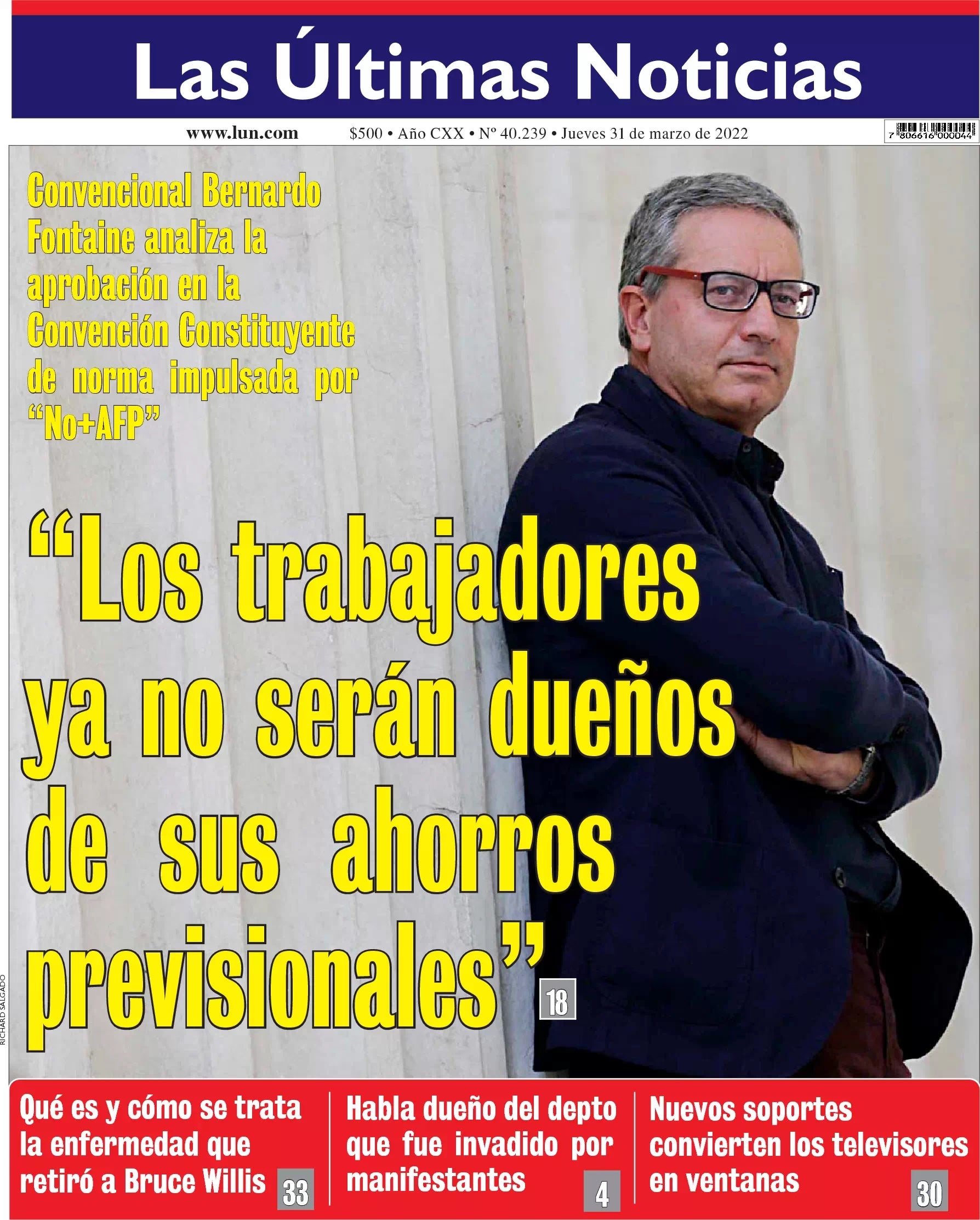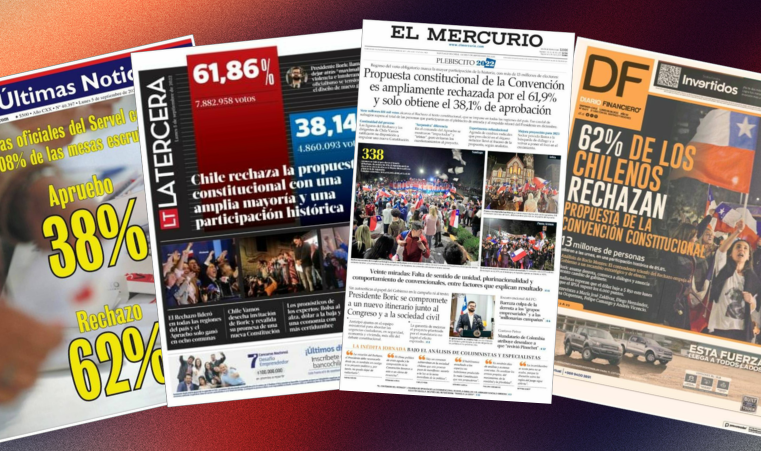Restoring public trust in news media may not be an effective a strategy against misinformation. And efforts to combat misinformation should instead focus on measures such as ensuring a reliable news ecosystem, strengthening journalistic standards, and raising media literacy.
That’s according to academic research conducted by journalists and academics from four universities in Chile, which found that people’s belief in false or misleading information does not depend on whether they trust the media they consume.
The research, published in the International Journal of Press/Politics in December, also demonstrated how news consumption influences electoral processes, especially when traditional media amplify misinformation.

The authors of the research are Magdalena Saldaña (top left), Ximena Orchard (top right), Sebastián Rivera (bottom left), and Guillermo Bustamante-Pavez. (bottom right). (Photo: X and LinkedIn)
The study, titled “‘Your house won’t be yours anymore!’ Effects of Misinformation, News Use, and Media Trust on Chile’s Constitutional Referendum,” was conducted as a proposal for a new constitution was put to a vote in 2022.
“Regardless of the extent to which people trusted the news, those who obtained their news from traditional media on traditional platforms were more likely to believe false or inaccurate claims about the constitutional process,” the study said.
The authors’ initial hypothesis was that the relationship between news consumption and belief in misinformation depended on the level of trust people had in the news media. In other words, individuals who trusted the media more would tend to believe less in misinformation.
However, the results showed otherwise.
“Our interpretation is that misinformation techniques were part of the political campaigns [surrounding Chile’s process for a new constitution] and, therefore, part of the discourse that the media reproduced,” the authors said in an email they collectively signed to LatAm Journalism Review (LJR). “Traditional media, by giving space to unverified or outright false information, may have served as amplifiers of that content, even if that was not the intention.”
The study was conducted by Magdalena Saldaña at the Catholic University of Chile; Ximena Orchard at the University of Santiago, Chile; Sebastian Rivera at Universidad Mayor; and Guillermo Bustamante-Pavez at the University of the Andes.
The authors say their findings reinforce the need for ongoing fact-checking work and training for journalists to better identify and communicate misinformation. The research also showed that a critical stance by readers toward the work of the news media could be more beneficial for democracy than simply trusting them. In fact, this critical stance could increase resilience to misinformation, they said.
“In debates with a high circulation of misleading or false information, it is necessary for the audience to have a critical attitude toward the information they hear, read, or receive,” the authors said. “The problem is that this attitude demands a lot from people, and not everyone has the desire, will, time, or skills to seek out additional and diverse sources of information.”
The newspaper Las Últimas Noticias, one of the highest-circulation print outlets in Chile, ran a headline on its front page on March 31, 2022, which was widely distributed across both traditional and digital media and on social networks.
“The workers will no longer be the owners of their pension savings,” the headline read. It was attributed to Bernardo Fontaine, a politician who at the time was a member of the convention in charge of drafting the new constitution, which would replace the one in effect in Chile since Augusto Pinochet’s dictatorship. The headline was presented as fact, but it turned out to be speculation of what could happen under the proposed constitution, according to the study.
Fontaine later took part in a heated debate on the morning show “Contigo en la Mañana” on the Chilevisión network. Fontaine argued the proposed constitution would reduce the right to private property, while another member of the constitutional convention argued that statement was a lie meant to spread fear.

Legacy news media provided space for dubious interpretations and rumors in the form of factual information during the Chile's constitutional process, experts said. (Photo: Screenshot)
Although Chilean fact-checking media managed to debunk such claims as a new constitution was being drafted, experts saw in this type of content a turning point in which traditional news media gave space to dubious interpretations and rumors, presenting them as news content.
In the end, the proposal for a new constitution was rejected by 62 percent of Chileans in a referendum held in September that year.
The research by Saldaña, Orchard, Rivera, and Bustamante-Pavez showed that Chileans’ news consumption influenced their voting decision in the referendum and that those who believed false claims spread by television, radio, and print media were significantly more likely to vote against the new constitution.
“Surprisingly, we found that people who informed themselves through traditional media were more likely to believe misinformation about the constituent process,” the authors said. “This is striking because one would expect these media to adhere to professional information verification standards, certainly higher than those on social media.”
The primary objective of the research was to identify the relationship between news consumption from different sources (traditional media, digital media, and social networks) and voting decisions. The authors examined whether Chileans’ news consumption and their trust in the news media were related to their belief in false claims about the constitutional process.
The study was based on an online survey of more than a thousand citizens, carried out before and one after the referendum. The first phase included questions aimed at measuring the respondents’ news consumption habits, their level of belief in false content about the constituent process, and their level of trust in the media. Demographic data, including political ideology, were also collected in this first phase.
In the post-referendum survey, participants were asked whether they had voted for or against the new constitution proposal.
The results confirmed the study’s initial hypothesis, which assumed that those who believed in false or inaccurate claims about the constitutional process were more likely to vote against the new constitution, and those who did not believe such claims were more likely to vote in favor.
The survey also revealed that participants who were older, had a higher level of education, identified with right-wing ideology, primarily obtained news from traditional media, and showed greater credulity toward false claims were more likely to vote against the proposal.
These results could confirm the perception that there was biased news coverage by traditional media, which may have led voters to misinterpret the proposal, the research showed.
“Most of the false information circulating during that period favored the rejection option because it was aimed at delegitimizing both the constitution proposal and the entire constituent process,” the authors said. “It is important to remember that, in general, people are more likely to believe something that is cognitively congruent with them. That is, if I am going to vote against a process for thousands of eventually valid reasons, it will be much easier for me to believe arguments that reinforce my position, even if they are misleading.”
The results also led the authors to deduce that obtaining news from digital media or social networks did not make people particularly predisposed to believe false or inaccurate claims, whereas consuming news from traditional media did.
Factors such as the high concentration of ownership of Chilean media, the lack of diversity of voices in the informational ecosystem, and certain angles in journalistic coverage may have contributed to creating an ideal breeding ground for the spread of misinformation through traditional media, the study said.
In Chile, a small number of conglomerates control the majority of media outlets. Two main groups, El Mercurio and COPESA, control more than 90 percent of the print media as well as a significant part of the digital market, while four groups dominate radio and television.

The research found that news consumption influenced the outcome of the referendum, which showed people's rejection of a new constitution. (Photo: Screenshots)
This concentration is not only financial but also has ideological implications. According to the research, even though the conglomerates that control the media define themselves as non-partisan, they are aligned with the country’s right-wing. The result is that voters who consumed traditional media were potentially more exposed to imprecise political information than those who relied on social networks, the study said.
“The crisis of legitimacy in institutions is negatively affecting both the production of news and the perception and trust of audiences,” the authors said. “However, we also learned that people are skeptical of the information they receive on social networks, which is a good finding—although users typically consume information on social platforms, they are also aware that the quality of this information is not necessarily the best.”
The authors argue that efforts to fight misinformation should be directed toward ensuring higher journalistic standards, increasing the diversity of voices in media, and working on the media literacy of audiences. The goal is to create a trustworthy news environment.
Although the research does not include specific recommendations, the authors said that actions such as training in cutting-edge fact-checking techniques and strengthening journalistic processes in newsrooms could be good starting points.
“It is necessary for both journalists and editors to comprehensively understand the phenomenon of misinformation by training and acquiring new skills,” the authors said. “Secondly, it is necessary to improve (or directly create new) journalistic routines to quickly verify the content that is published.”
They also recommended prudence over speed.
“Rather than being the first to publish and make mistakes, it is preferable to publish more slowly, or later than other media, but without errors,” the authors said.
However, they admitted that given the reality faced by media in Chile and Latin America, these strategies might encounter difficulties in being implemented.
“It is challenging because it requires not only will but also resources on the part of the media,” they said. “Verifying information requires training, time, and effort, and it should be a task that guides journalistic work during electoral processes, receiving the appropriate support from news organizations.”